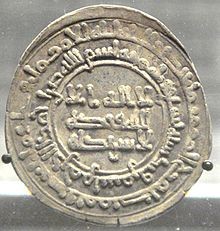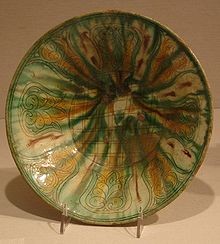The Samanids
The
Samani dynasty (Persian: سلسلهٔ سامانیان), also known as the Samanid Empire, or simply Samanids
(819–999) (Persian: سامانیان Sāmāniyān) was a Persian state and
empire in Central
Asia and Greater Khorasan. Named after its founder Saman Khuda, who converted
to Sunni Islam despite being from Zoroastrian
theocratic nobility. It was the first native Persian dynasty in Greater Iran
and Central Asia after the collapse of the Sassanid Persian empire caused by
the Arab conquest.
The Samanids were a Persian state that reigned for 180
years, encompassing a territory which included Khorasan, Ray, Transoxiania, Tabaristan,
Kerman, Gorgan, and west of these provinces up to Isfahan. The Samanids were
descendants of Bahram Chobin, and thus descended from the House of Mihrān, one
of the Seven Great Houses of Iran. In governing their territory, the Samanids
modeled their state organization after the Abbasids, mirroring the caliph's
court and organization. They were rewarded for supporting the Abbasids in Transoxania
and Khorasan, and with their established capitals located in Bukhara, Balkh, Samarkand,
and Herat, they carved their kingdom after defeating the Saffarids.

|
| Coin of Nasr II, minted in Samarqand, 921-922. British Museum. |
With their roots stemming from the city of Balkh (then, part
of Greater Khorasan) the Samanids promoted the arts, giving rise to the
advancement of science and literature, and thus attracted scholars such as Rudaki
and Avicenna. While under Samanid control, Bukhara was a rival to Baghdad in
its glory. Scholars note that the Samanids revived Persian more than the Buyids
and the Saffarids, while continuing to patronize Arabic to a significant
degree. Nevertheless, in a famous edict, Samanid authorities declared that
"here, in this region, the language is Persian, and the kings of this
realm are Persian kings."
The Samanid Empire was the first native dynasty to arise in Iran after the
Muslim Arab conquest. It was renowned for the impulse that it gave to Iranian
national sentiment and learning.
The four grandsons of the dynasty's founder, Saman-Khoda, had been rewarded
with provinces for their faithful service to the Abbasid caliph al-Mamun: Nuh
obtained Samarkand; Ahmad, Fergana; Yahya, Shash; and Elyas, Herat. Ahmad's son
Nasr became governor of Transoxania in 875, but it was his brother and
successor, Ismail I (892-907), who overthrew the Saffarids in Khorasan (900)
and the Zaydites of Tabaristan, thus establishing a semiautonomous rule over
Transoxania and Khorasan, with Bukhara as his capital.
The Samanids not only revived Persian culture but they also determinedly
propagated Sunni Islam. In doing so, the Samanids repressed Ismaili Shiism
but remained tolerant of Twelver Shiism. The Samanid state became a
staunch patron of Islamic architecture and spread the Islamo-Persian culture
deep into the heart of Central Asia. The population within its areas began
firmly accepting Islam in significant numbers, notably in Taraz, now in modern
day Kazakhstan. The first complete translation of the Qur'an into Persian
occurred during the reign of Samanids in the 9th century.
According to historians, through the zealous missionary work of Samanid
rulers, as many as 30,000 tents of Turks came to profess Islam and later under
the Ghaznavids higher than 55,000 under the Hanafi school of thought. The mass
conversion of the Turks to Islam eventually led to a growing influence of the Ghaznavids,
who would later rule the region.

|
| Samanid era art Bowl |
Agriculture and trading were the economic basis of Samanid State. The
Samanids were heavily involved in trading - even with Europe, as thousands of
Samanid coins that have been found in the Baltic and Scandinavian countries
testify.
Another lasting contribution of the Samanids to the history of Islamic art
is the pottery known as Samanid Epigraphic Ware: plates, bowls, and pitchers
fired in a white slip and decorated only with calligraphy, often elegantly and
rhythmically written. The Arabic phrases used in this calligraphy are generally
more or less generic well wishes, or Islamic admonitions to good table manners.
In 999 their realm was conquered by the Karakhanids.
Under Ghaznavid rule, the Shahnameh, was completed. In commending the
Samanids, the epic Persian poet Ferdowsi says of them:
کجا آن بزرگان ساسانیان
زبهرامیان تا بسامانیان
"Where have all the great Sassanids gone?
From the Bahrāmids to the Samanids what has come upon?"
|
 |
|
|
 |
|
|
 |
|
|
|

